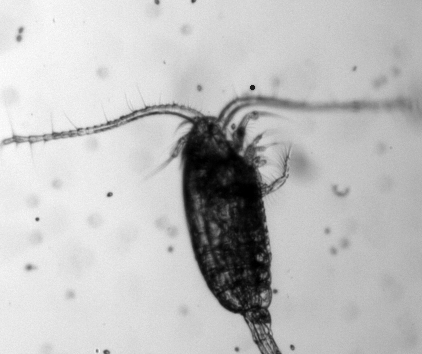Tiselius P, Saiz E, Kiørboe T. (2013). Sensory capabilities and food capture of two small copepods, Paracalanus parvus andPseudocalanus sp. Limnol Oceanogr.58: 1657-1666
How do copepods perceive their microscopic prey? Some copepods generate a feeding current and harvest microscopic prey particles that arrive in the feeding current. During the past 30 years it has been believed that the copepod is able to smell the prey cells at a considerable distance and redirect its feeding current to capture the cell. However, a simple model of chemical sensing suggests that this is unlikely to be feasible. In this study we use high-speed, high magnification video to document prey perception and capture in two species of copepods. Invariably, the copepod responds to prey cells only when the cell is touching one of the sensory setae on the feeding appendages. We are not sure whether the capture response is elicited by ‘touch’ or ‘taste’ cues, but the cells are never detected at distance using smell, as commonly believed. This discovery of sensory mode and detection distance has implications for how we describe copepod feeding in our trait based models.
You can get the full article here.

Video: Slow motion movie (1:200) of perception and capture of a microscopic alga by the copepod Paracalanus